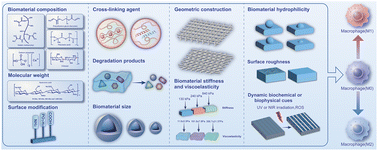Potential effects of biomaterials on macrophage function and their signalling pathways
Abstract
The use of biomaterials in biomedicine and healthcare has increased in recent years. Macrophages are the primary immune cells that induce inflammation and tissue repair after implantation of biomaterials. Given that macrophages exhibit high heterogeneity and plasticity, the influence of biomaterials on macrophage phenotype should be considered a crucial evaluation criterion during the development of novel biomaterials. This review provides a comprehensive summary of the physicochemical, biological, and dynamic characteristics of biomaterials that drive the regulation of immune responses in macrophages. The mechanisms involved in the interaction between macrophages and biomaterials, including endocytosis, receptors, signalling pathways, integrins, inflammasomes and long non-coding RNAs, are summarised in this review. In addition, research prospects of the interaction between macrophages and biomaterials are discussed. An in-depth understanding of mechanisms underlying the spatiotemporal changes in macrophage phenotype induced by biomaterials and their impact on macrophage polarization can facilitate the identification and development of novel biomaterials with superior performance. These biomaterials may be used for tissue repair and regeneration, vaccine or drug delivery and immunotherapy.



 Please wait while we load your content...
Please wait while we load your content...